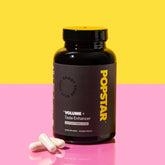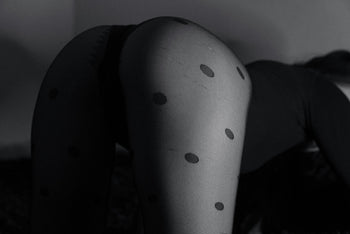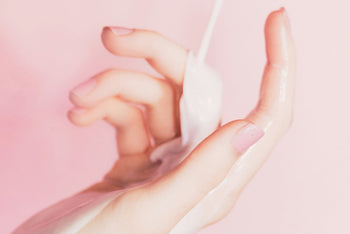

Table of Contents
Key Takeaways
Normal testosterone levels in men range from 264–916 ng/dL
Symptoms plus repeat low levels = true hypogonadism
TRT can help with libido, mood, lean mass, and bone, but comes with side effects
Cardiovascular risks appear neutral, but blood pressure increases are real
TRT suppresses fertility—don’t skip that talk if babies are in your plan
Monitoring labs is essential (hematocrit, PSA, BP, etc.)
You might not need TRT—lifestyle changes can make a big impact
Let’s talk testosterone—the hormone that fuels your morning wood, keeps your muscles stacked, and makes you feel like you could wrestle a bear... or at least carry all the groceries in one trip. But when we say "normal testosterone levels men," what does normal even mean? And why does every guy in his 30s suddenly want to inject himself with the strength of a thousand bulls?
Before you go full Wolverine with a syringe, let’s break it all down: the numbers, the symptoms, the science, the risks, and whether testosterone replacement therapy (TRT) is your ticket to vitality or a slippery slope to midlife madness.
What Testosterone Does (And Why It’s More Than a Sex Hormone)
You probably already know testosterone plays a starring role in sex drive, erections, and sperm production. But this hormonal MVP also influences:
Red blood cell production
Muscle mass and strength
Bone density
Mood, motivation, and focus
Energy levels
It’s basically your biological hype man. That’s why low testosterone symptoms don’t just show up in the bedroom—they sneak into your gym routine, your mood, your energy, and even your morning motivation to make eggs.
So, What Is a Normal Testosterone Level for Men?
Ah yes, the million-dollar question. According to the harmonized reference range—the gold standard based on healthy, non-obese men aged 19 to 39— normal testosterone levels in men fall between 264 to 916 ng/dL for total testosterone.
But don’t get hung up on one number. Levels naturally fluctuate daily (they’re highest in the morning), and a single blood draw doesn’t tell the full story. That’s why the AUA testosterone guidelines recommend two early morning testosterone tests before jumping to conclusions.
Even more important: Symptoms matter. A guy with 280 ng/dL and no complaints? Probably not a case of hypogonadism in men. But if you're sitting at 310 ng/dL and feel like a couch cushion with a beard, it might be time to dig deeper.
How to Test: The Morning Testosterone Ritual
Don’t worry, it’s not some mystical rite of passage. But the details matter.
Best practices:
Test before 10 a.m. (Testosterone peaks in the early hours)
Repeat the test on a separate day
If borderline, check free vs total testosterone (especially if your sex hormone binding globulin—or SHBG—is out of whack)
Many clinicians also order a full workup: LH, FSH, prolactin, PSA, hematocrit, and blood pressure. Why? Because diagnosing low testosterone symptoms is part science, part detective work.
When Does TRT Enter the Chat?
Once you’ve confirmed low testosterone levels in men with symptoms and repeat testing, TRT might be on the table. But it's not like tossing back a protein shake and suddenly becoming Captain America.
Here’s when testosterone replacement therapy gets considered:
You’ve got symptoms of low T and
Confirmed low total T on two separate morning tests
Other causes like obesity, alcohol, sleep apnea, and medications have been ruled out or addressed
This is when you and your doctor have the "are we doing this?" talk. And it's not just about big gains—it’s about symptom relief, lab monitoring, and managing expectations.
TRT Benefits and Risks (and the Myth of Instant Swagger)
Let’s get real about TRT benefits and risks because there’s a lot of hype—and a fair bit of BS.
What science actually shows TRT can help with:
Libido & erections: Modest improvements, especially if low T is your root issue
Mood & energy: Mixed results, but some men feel more alive
Muscle & fat: Lean mass up, fat mass down (gym bros rejoice)
Bone density: Improved with longer-term use
Anemia: TRT helps if low red blood cells are part of your story
Now for the fine print (the stuff nobody brags about on Reddit):
TRT side effects include:
Acne and oily skin
Polycythemia (too many red blood cells)
Sleep apnea flares
Fertility suppression (bye-bye swimmers)
Prostate concerns (watch that PSA)
Elevated blood pressure
TRT and Cardiovascular Risk: The TRAVERSE Trial Tea
For years, rumors swirled that TRT might break your heart (literally). But the TRAVERSE testosterone trial showed TRT didn’t increase the risk of major cardiovascular events overall. Still, there were upticks in:
Atrial fibrillation
Pulmonary embolism
Acute kidney injury
So the FDA testosterone label update 2025 now emphasizes blood pressure monitoring and restricts TRT use to men with true hypogonadism—not dudes looking to “biohack” their way into an extra inch of bicep.
TRT Options: Gels, Injections, Pellets, and Nose Goo
You’ve got options. Some more convenient, others more “turn your bathroom into a lab.”
Top options for testosterone replacement therapy:
Gels/creams: Easy, but avoid hugging toddlers or golden retrievers after applying
Patches: Stick-on hormone helpers, if your skin isn’t a diva
Injections (short/long): Cheap and effective but expect mood swings and needle skills
Oral capsules: Convenient, but can spike blood pressure
Nasal gel: Microdoses that go up your nose (weird but effective)
Pellets: Implanted under your skin every 3–6 months—because why not?
Want more control over your sex life? TRT might help. But for those more interested in boosting performance and taste right now, Popstar’s Volume + Taste Supplement has your back (and your balls).
Monitoring: You’re Not Off the Hook Once You Start TRT
TRT is not “set it and forget it.” You’ll need:
Baseline labs (Testosterone x2, LH/FSH, PSA, hematocrit, BP)
Repeat labs at 3 months, then every 6–12 months
Close watch on testosterone and cardiovascular risk
Adjustments if side effects pop up or labs go rogue
The testosterone monitoring schedule is part of the deal. It’s how you avoid trouble—and get the most out of your therapy.
Naturally Boosting T: Because Not Everyone Needs a Prescription
TRT is not the only way to raise T. Here's how to increase testosterone naturally (and safely):
Fix your sleep: Especially if sleep apnea’s in the mix
Drop some fat: Especially belly fat
Strength train: Lift heavy, feel better
Cut back on booze: Your liver and your T will thank you
Check your meds: Opioids, steroids, and antidepressants can tank T
Lifestyle changes to boost testosterone are not a scam. They’re your foundation. TRT is a tool—not a cure-all.
Conclusion: Think Before You Inject
Normal testosterone levels in men are a range, not a destination. Numbers matter, but symptoms matter more. If you’re dragging, struggling in the bedroom, or feeling like a shell of your former self, get tested. Twice.
Then take a breath. Consider the TRT benefits and risks, review the AUA testosterone guidelines, and talk to a pro who’s up on the latest from the Endocrine Society testosterone guidelines.
And remember: sometimes all you need is better sleep, cleaner eating, and a boost from something Popstar’s Volume + Taste Supplement.
FAQ: Testosterone, TRT, and What It Means for You
What are normal testosterone levels in men?
Most healthy men have total testosterone levels between 264–916 ng/dL, but symptoms and context matter more than the number alone.
When should I get a morning testosterone test?
Before 10 a.m., ideally twice on different days. This helps rule out natural daily fluctuations.
What's the difference between free vs total testosterone?
Total includes both bound and unbound testosterone. Free T is the active form. It’s especially useful when SHBG levels are abnormal.
Is TRT for low T safe?
Mostly, yes. But you need monitoring for hematocrit, PSA, and testosterone and cardiovascular risk. Know the TRT side effects.
Can TRT affect fertility?
Absolutely. TRT suppresses sperm production. Men trying to conceive should consider alternatives.
How much does testosterone therapy cost?
Varies by method. Injections are cheapest, pellets and orals tend to be pricier. Always factor in monitoring and follow-up visits.
What are the best testosterone replacement options?
Depends on your goals. Gels offer ease, injections offer control, pellets offer long-term dosing. Pick what fits your life.
Does TRT affect mood and libido?
Yes—especially if your low T is causing those symptoms. Just don’t expect to feel like a rockstar overnight.
What do the AUA and Endocrine Society say?
They agree: TRT is for men with medical hypogonadism, not age-related dips. And you must monitor.
Can I try Popstar products before going full TRT?
If you're looking to enhance volume, flavor, and stamina without a prescription, our Volume + Taste Supplement and Delay Spray might be all you need.











